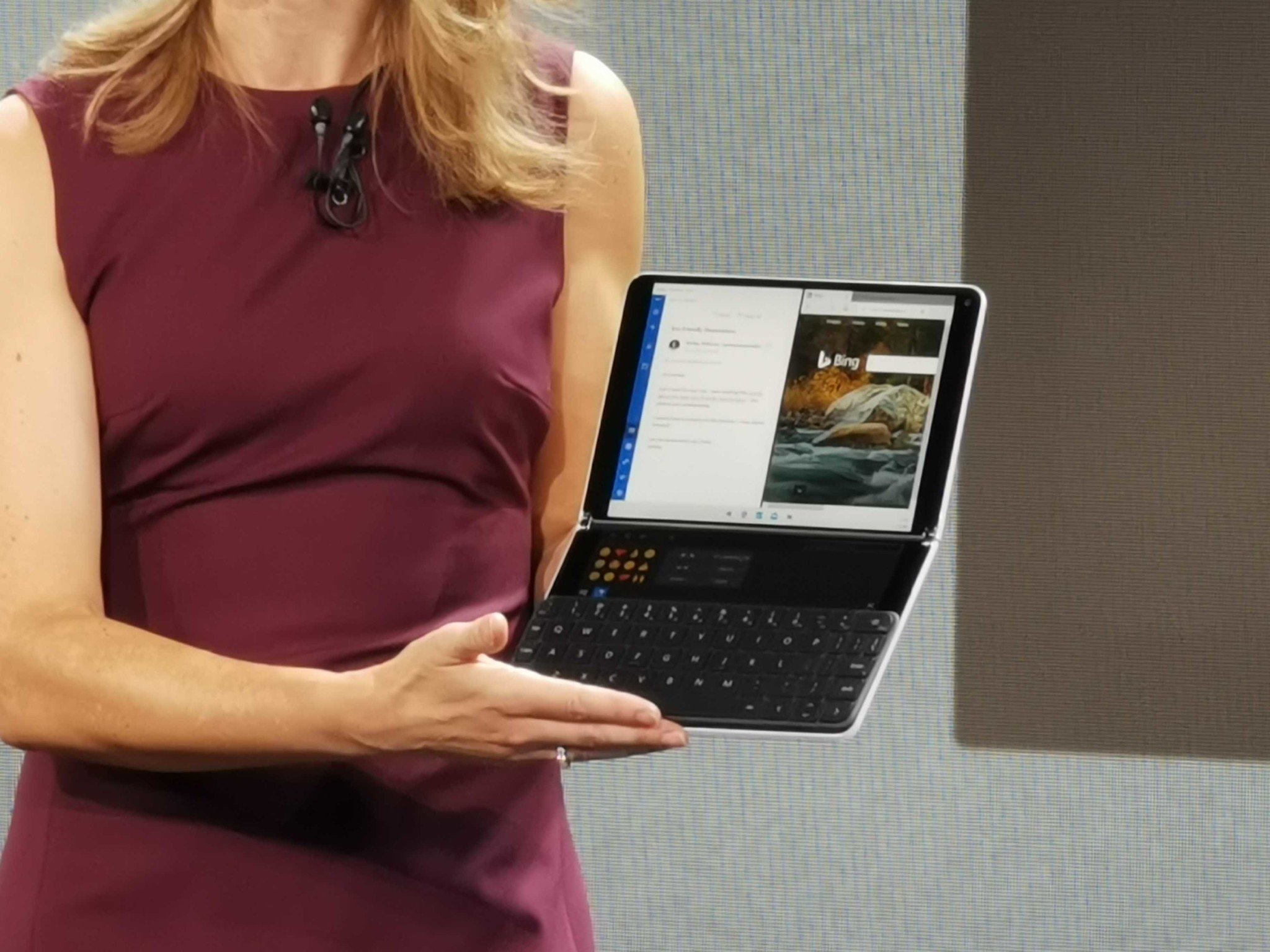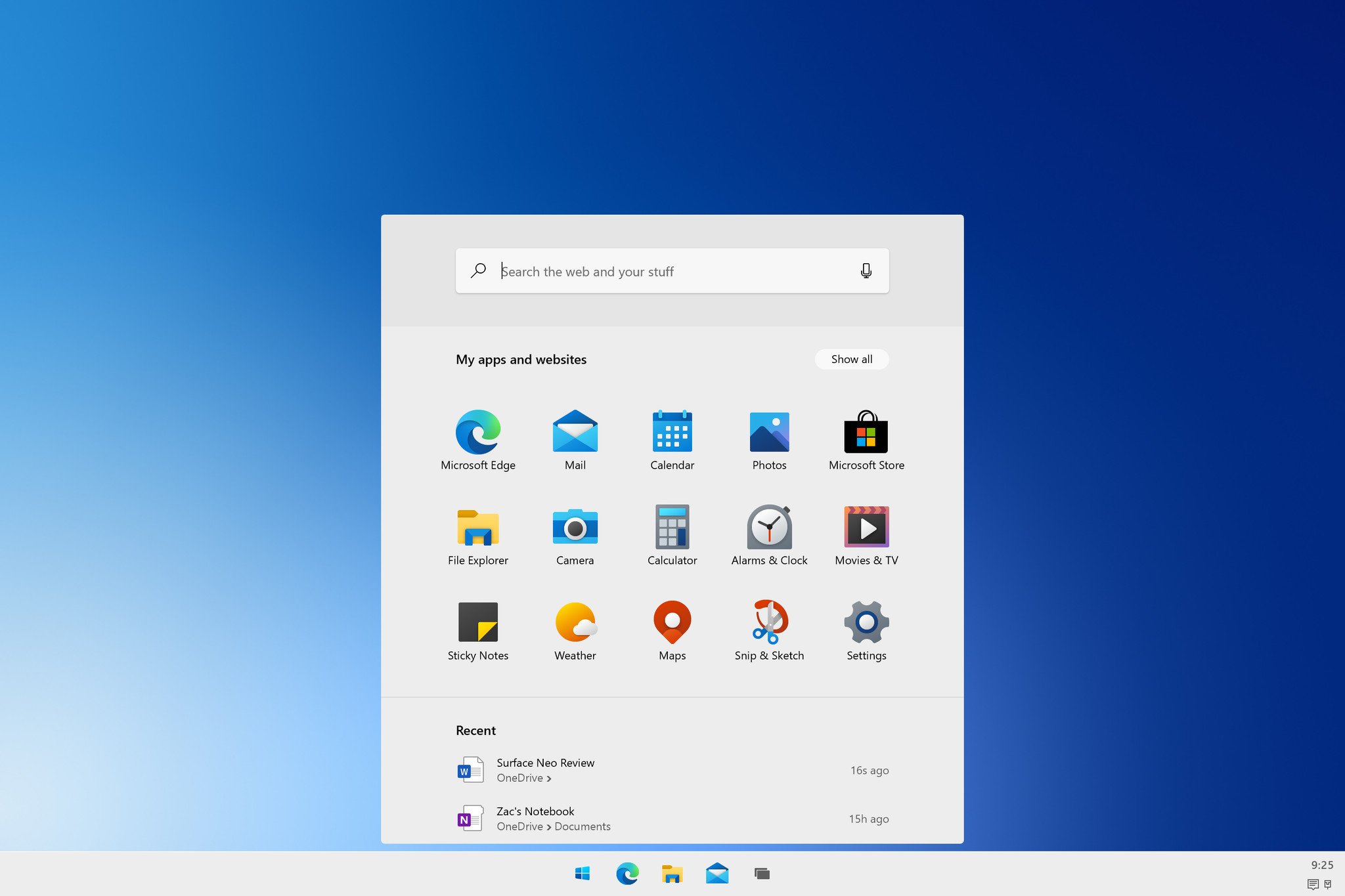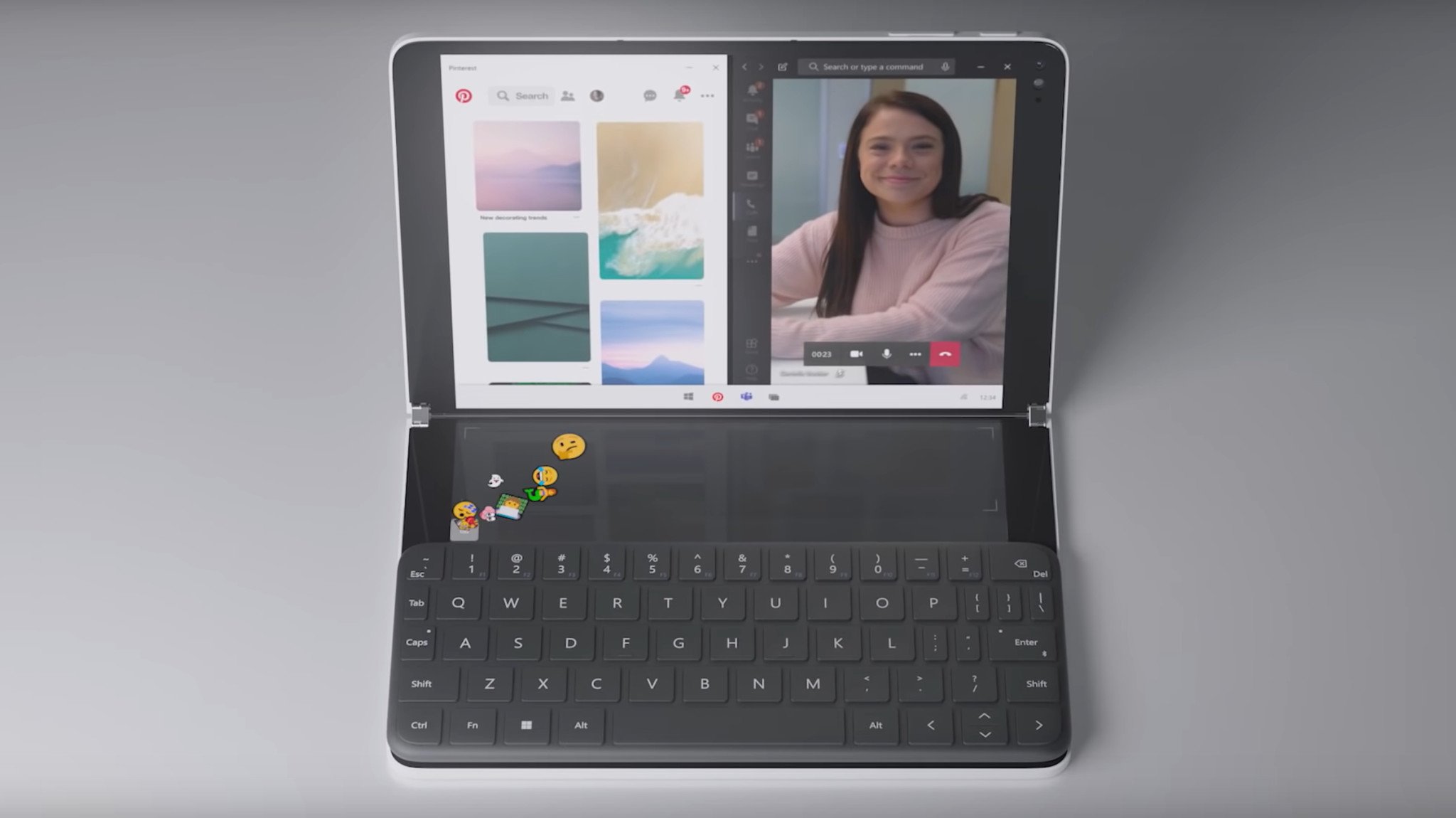Surface Neo is a dual-screen PC by Microsoft, and this is everything we know about it so far.
Microsoft is building a dual-screen Surface PC that runs a new variant of Windows known as Windows 10X that will be launching at some point in the future. Right now, information around the Surface Neo is light, and that seems to be a deliberate move by to keep fans interested, and also not to give competitors an advantage by beating them to market.
So, to keep everything it all in one handy place, we've written up everything we know about the Surface Neo.
Surface Neo hardware
Surface Neo is a device that features two LCDs that are joined together by a unique hinge design that allows the screens to be used together via multitasking or individually. It's designed like a book, but can be used in many different postures such as a laptop or tablet when needed as well. The displays themselves are 9-inches each, which totals 13.1-inches of screen real-estate when both are in use together.
When closed, the device is 11.2mm thin, making both halves 5.6mm when open. It's also 655 grams, which is a little on the heavier side but adds to the overall premium feel of the device. On the outside, the device is covered in glass, which is a departure from other Surface products that historically use magnesium or aluminum.
The Neo also has a Windows Hello IR set up along the top bezel on the left side of the device, as well as a front-facing camera to go with it. On the left side of the device are the power and volume buttons, with a single USB-C port located near the hinge on the right side of the device.
On the inside, the Surface Neo is rocking an Intel Lakefield processor, along with an LTE modem for always-connected capabilities. We don't know anything about RAM or Storage at this time, although it's safe to assume it'll be available in your traditional 8GB/16GB RAM configurations along with 128GB/256GB of storage.
Surface Neo software
On the software side of things, the Surface Neo is running a new version of Windows called Windows 10X. This is a new modern OS from Microsoft that's designed for lightweight computing and modern experiences no matter the device. It guts legacy components and features, which means everything from the Windows Shell to the underlying OS has been rebuilt with modern technologies, while still maintaining legacy app support for those who need it.
Windows 10X on foldable PCs features an enhanced UI designed with touch as a primary method of input. It has a minimized taskbar that can be swiped up to reveal your running and pinned apps, including the usual Start and Task View buttons. Tapping on an app icon from either display will launch that app on the display you're interacting with, and can be spanned to utilize both screens by dragging the app to the center bezel.
There's a new Action Center that puts more emphasis on quick actions, with the ability to jump into specific actions for further control without leaving the Action Center at all. It's also designed in such a way that mimics a control center, with notifications housed above it in a separate box. This new Action Center includes things like volume controls, power options, battery percentage, and music controls.
Because Windows 10X is still Windows, it can run all your usual Windows programs, including those from outside the Microsoft Store. Microsoft categorizes the Surface Neo as a PC, and as such, will allow you to run those PC apps when required. But since Windows 10X is a modern OS, those legacy applications operate through a container. This container contains a stripped back version of legacy Windows 10 to power Win32 programs, and places the application on the modern Windows 10X desktop as if it were a native app.
Unlike legacy applications, modern UWP and web apps run natively on Windows 10X. Microsoft has been working hard to make sure there's no noticeable difference in performance between legacy apps and modern apps. Still, there might be a slight delay when launching a legacy app if no other legacy apps are running. Because of how containerization works, Win32 apps on Windows 10X are sandboxed and cannot affect the overall system. This means programs that affect system files or partition hard drives won't be allowed.
Surface Neo will also feature faster updates thanks to Windows 10X, with feature updates taking less than 90 seconds to reboot once a feature update is ready to do so.
Surface Neo accessories
In addition to the hardware itself, Microsoft also unveiled two accessories that pair with the Surface Neo. The first of which is a magnetic keyboard that attaches to the display and allows you to type with tactile feedback, just like on a laptop with a dedicated keyboard. The keyboard can also attach to the outside of the device, which is where it can wirelessly charge when not in use. The other accessory is the new Surface Pen, which also wirelessly charges on the back of the device.
The keyboard accessory, when attached to the display, enables "Wonderbar" that essentially turns half of the display into an enhanced TouchBar. You can find emoji, control functions, and even use a virtual trackpad.
Surface Neo release date
Microsoft had originally planned to ship Surface Neo at the end of 2020, however that plan has been delayed and now the product sits without a known release date. Rumors suggest Surface Neo won't arrive until 2022 at the earliest, giving Windows 10X a chance to begin shipping on commercial laptops first. Subsequently, we have no idea how much Surface Neo will cost, but considering the fact that Surface Duo started at $1,400, we'd expect Surface Neo to cost considerably more.
via https://AiUpNow.com January 30, 2021 at 10:01AM by Zac Bowden, Khareem Sudlow,




